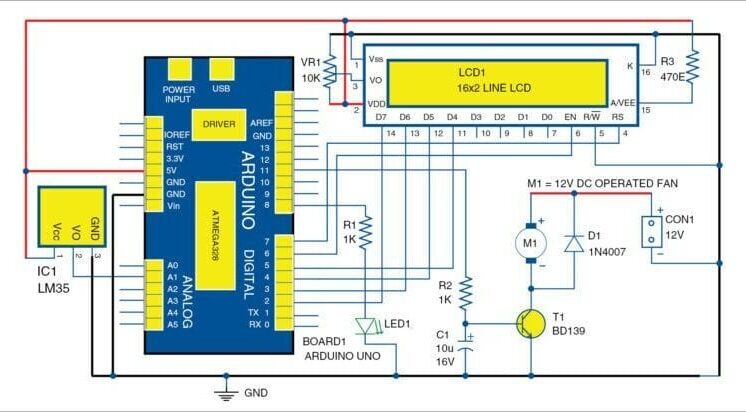H-Bridge-motor-driver-circuit

intro:
What is H-bridge-motor-driver?
An H bridge is an electronic circuit that enables a voltage to be applied across a load in opposite direction. These circuits are often used in robotics and other applications to allow DC motors to run forwards or backwards.
What is the purpose of it ?
A motor driver is a little current amplifier, the function of motor drivers is to take a low-current control signal and then turn it into a higher-current signal that can drive a motor.
Designing methods & COMPONENTS
•4 Resistors (2-100 ohms & 2-K ohms)
•6BJT – 2PNP (BC547) & 4NPN (BC557)
•1- 0.1nF capacitor
•1- 100uH inductor
•1 DC 9V motor
• 12V battery
Circuit diagram & Pspice simulation



How does it works?
• Here, we have used very low inductor and capacitor in the circuit because a good amount of load required to start the motor, at that time circuit loses control of its load for a very few second and occur down to the voltage level. For getting rid of it, we have implemented that load idea. The capacitor at that time discharges and inductor recovers the load of the circuit, and that’s how the instant voltage drop can be minimized.
• For connection ‘A’ the motor will cycle as the clock wise position, and for ‘B’ part connection it will cycle as the anti-clock wise position.
• We have used power BJT in the circuit implementation as the power BJT is more sufficient for that purpose.
Cost & Benefits of it:
•We can use it to build Line-follower.
•We can also use it the switching circuit.
•It can be used to amplify current from high voltage.
•It can minimize the extra cost of buying Arduino or IC.
•It is a very cheap cost implementation circuit.
•The total cost of our circuit is only 100 taka (having 10tk for 6BJT, 30tk for wire, 2tk for resistor, 2tk for capacitor & inductor, 50tk for breadboard)

